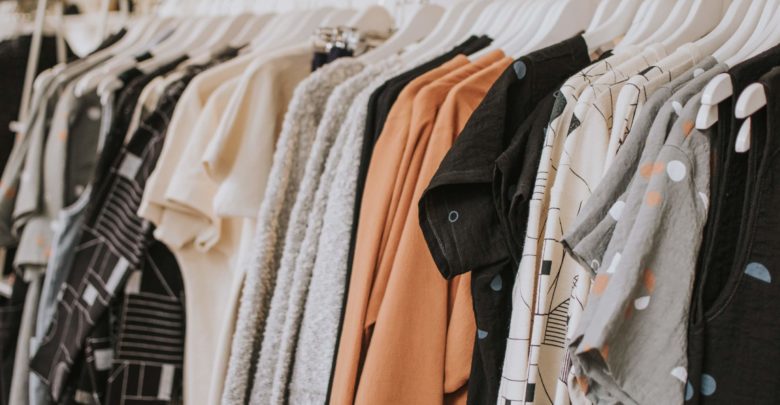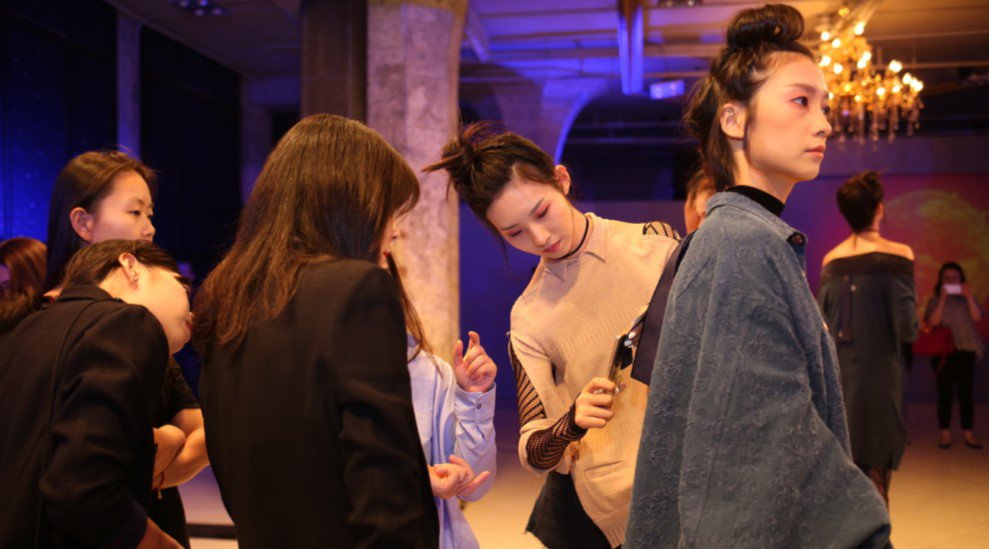Technology
Blockchain: A New Trend in the Fashion Industry

The world of fashion, like many other sectors, is increasingly looking to blockchain technology to find solutions to issues like supply chain transparency, ownership, and efficient data sharing. Blockchain could help clothing makers demonstrate ethical manufacturing processes and could help luxury brands prove authenticity.
Tracking goods from origin to owner
Most recently, Louis Vuitton has been on the spotlight for its use of blockchain to prove the authenticity of goods. Reportedly, LVMH has been working for over a year on a blockchain platform in collaboration with ConsenSys and Microsoft Azure.
The platform, named AURA, has been built using Ethereum’s Quorum technology. It aims to prove the authenticity of luxury goods, tracking items right from their first raw materials through to sale and even to when they are sold again. After this, according to reporting by CoinDesk and a source in the know:
“The next phase of the platform will explore (the) protection of creative intellectual property, exclusive offers and events for each brands’ customers, as well as anti-ad fraud.”
The LVMH group encompasses 60 of its own brands and plans to offer the AURA platform on a white-label basis to other luxury brands.
However, in spite of LVMH’s size and importance, it is safe to say that the deployment of blockchain in the fashion industry isn’t reserved to the big players. There has been efforts around the world to implement the technology not only in proving a product’s origins, but also its authenticity and the working conditions it was manufactured or deployed in.
Proving authenticity globally at a local scale
The need to prove authenticity comes alongside the shifts in consumer practices of the 21st century. We also see the increase of awareness surrounding ethical practices and environmental concerns, touching production to distribution, to branding.
According to the Global Brand Counterfeiting report, online and offline counterfeiting of textiles, clothing, footwear, handbags, watches and cosmetics reached $98 billion in 2018.
As a result, strong demand for more information about the product’s origins and a transparent view of its impact on the world has become the main component in the construction of trust between consumers and brands. With that in mind, a number of projects have emerged around the world to address this practice.
In this aspect, the deployment of blockchain is a direct representation of the evolution of customer relationship with brands.
In the U.S:
Blockchain-based systems often offer solutions to multiple industry problems which all have their root in an encompassing issue, the secure verification of digital data. Because blockchain provides a significant advantage of data immutability, concerns over authenticity can be directly targeted to give transparency to the chain of ownership and fight cases of counterfeiting.
A luxury U.S jeweller, Brilliant Earth, is ready to debut a platform created with Everledger which has digitally registered over 2 million diamonds. All this information, as well as videos of the diamond, can be accessed on the Brilliant Earth website.
Brilliant Earth’s platform for diamonds tracks a gemstone’s origins and owners also proving authenticity. Unique markings on each diamond enable it to be identified and its origin, weight, value, and ownership to be tracked.
Carrie George, Director of Responsible Sourcing at Brilliant Earth, explained that this partnership came at a critical time for the diamond industry as they struggle to address predominant human rights abuses. He said:
“By integrating Everledger’s blockchain-based solution platform into our current processes, we hope to establish a new standard for addressing social and environmental issues related to mining and manufacturing of gemstones and precious metals.”
In Europe:
Arianee, a non-profit from Paris, wants to build a global standard for digital certification using its blockchain-based protocol. Through an application, valuable and luxury goods can have their own digital identity or certificate. As per Sifted, Luc Jodet, Arianee co-founder says:
“It’s like the passport of the product. It proves that it’s yours, it’s authentic, and you can transfer it to anyone you want.”
Vogue reporting points to Arianee launching one of its first projects this June, verifying the authenticity of “vintage timepieces.” It’s also working on a proof-of-concept for a luxury footwear brand.
For valuable goods like jewellery and art that can often be counterfeited, or stolen, and sold on to unsuspecting owners blockchain could deliver a trusted unchangeable way to confirm an item is authentic and exactly who owns it.
One of the biggest challenges for using blockchain in this way is how each item is tagged to make the digital connection with its blockchain-based record.
Berlin-based Lukso is also working to offer a new form of digital collectables to fashion brands. Through a digital authenticity ecosystem based on Lukso’s blockchain and its native cryptocurrency LYX, they aim to provide new ways of interaction between all stakeholders.
The possibility of tailoring a custom token exemplifies how fashion enterprises can, not only tokenize any imaginable fungible asset but also harness brand management and customers loyalty through rewards and certificates.
Speaking with Sportswear International, co-founder and CEO Marjorie Hernandez de Vogelsteller, explained a blockchain use-case where consumers can ensure their big-brand sneaker purchase is genuine:
“Imagine the sneaker had been provided with an immutable digital identity, for example by ways of an RFID chip, and this identity had been added to a blockchain, with all information around the sneaker: the factory it was produced at, the date it was shipped, the original retailer where the re-seller has bought it, etc. Thanks to the nature of blockchain, its decentralization, its transparency and the cryptography, now the consumer is able to verify the authenticity of the sneaker without any doubt and digitally own it.”
In Asia:
Babyghost, a Chinese fashion brand, teamed up with BitSE, a Shanghai-based Blockchain-as-a-Service (BaaS) company, to work on a blockchain solution using VeChain’s technology as early as 2016. The development, titled FashTech, focused on adding digital chips to clothing and QR barcodes to labels. Near Field Communications (NFC) technology means a chip can communicate directly with a device sharing the digital identity and authenticity of an item. Or, QR codes can be scanned by the software application, again displaying data quickly to a consumer and resulting in product safety and quality assurance.
Considerably ahead of its time, Babyghost and VeChain decided to interact with their customers through the garments during Shanghai’s Fashion week in 2016 to show how far blockchain technology can reach.
They presented 20 models embedded with a VeChain chip, which allowed those present to simply scan the chip and receive an interactive memory of the model.

BitSE’s COO, Sunny Lu, talked about innovation for extraordinary customers experience.
“This event illustrates that fashion brands, especially high fashion brands, need to keep the consumer in mind and give them more than a product.”
Protecting workers
As well as providing proof of authenticity and origin for fashion and luxury products, blockchain can help often protect vulnerable workers at the very start of an item’s lifecycle. Workers like diamond miners, those who farm or process raw materials, or make clothing, can be underpaid and poorly treated.
By demonstrating the origin and telling the story of everyone involved in a product’s process, blockchain’s trusted data sharing can enable consumers to make informed choices. Choosing ethically made products closes the market for unethical practices.
Artisan-made shoe brand Fuchsia is using the Provenance blockchain to record and communicate the history of its products. Provenance allows Fuchsia to share the story of its shoe-manufacturer in workshops in Pakistan, thus demonstrating the fair working conditions of its artisans and the benefits to local communities.
Provenance targeted the increasing demand for transparency to change one thing about products: how little we know about them. They provide secure traceability of certificates in the supply chain to give every physical product a digital passport proving authenticity and origin. By creating an auditable record of the journey behind these products, Provenance is one of the platforms deploying blockchain to fight the issue of bad working conditions.
Improving processes and supply chains
Blockchain’s ability to provide a secure, sharable, database of information that is verified and trusted, can deliver systems which immediately do away with outdated, time-consuming, and manually heavy administration systems.
If stakeholders can quickly access data they can trust, without using many different systems, numerous emails, and paper trails, supply chains are improved, and costs are lowered. The ability to access the entire history of a product in real-time could speed every part of its time-to-market.
These benefits can be passed to consumers, brands, and workers. Purchasers at any stage of a product’s lifecycle can make fast, informed, choices that protect workers and the environment, and prevent counterfeiting and exploitation.




Very informative article post.Really thank you! Keep writing.
Hiya, I am really glad I have found this info. Nowadays bloggers publish only about gossips and internet and this is actually irritating. A good website with interesting content, that’s what I need. Thank you for keeping this web site, I will be visiting it. Do you do newsletters? Cant find it.
Generally I don’t read post on blogs, but I would like to say that this write-up very forced me to check out and do it! Your writing style has been surprised me. Thank you, quite nice post.
Hello my friend! I wish to say that this post is awesome, nice written and include approximately all important infos. I would like to peer more posts like this .
There’s definately a great deal to find out about this issue. I like all of the points you have made.
Unquestionably imagine that that you stated. Your favorite justification appeared to be at the web the easiest thing to have in mind of. I say to you, I certainly get annoyed even as people consider concerns that they plainly don’t realize about. You controlled to hit the nail upon the top and outlined out the entire thing with no need side effect , other people can take a signal. Will probably be back to get more. Thanks
Appreciate it for all your efforts that you have put in this. Very interesting information.
Really appreciate you sharing this post.Really looking forward to read more. Really Cool.
Amazing issues here. I’m very glad to peer your post. Thank you a lot and I am looking forward to contact you. Will you kindly drop me a mail?